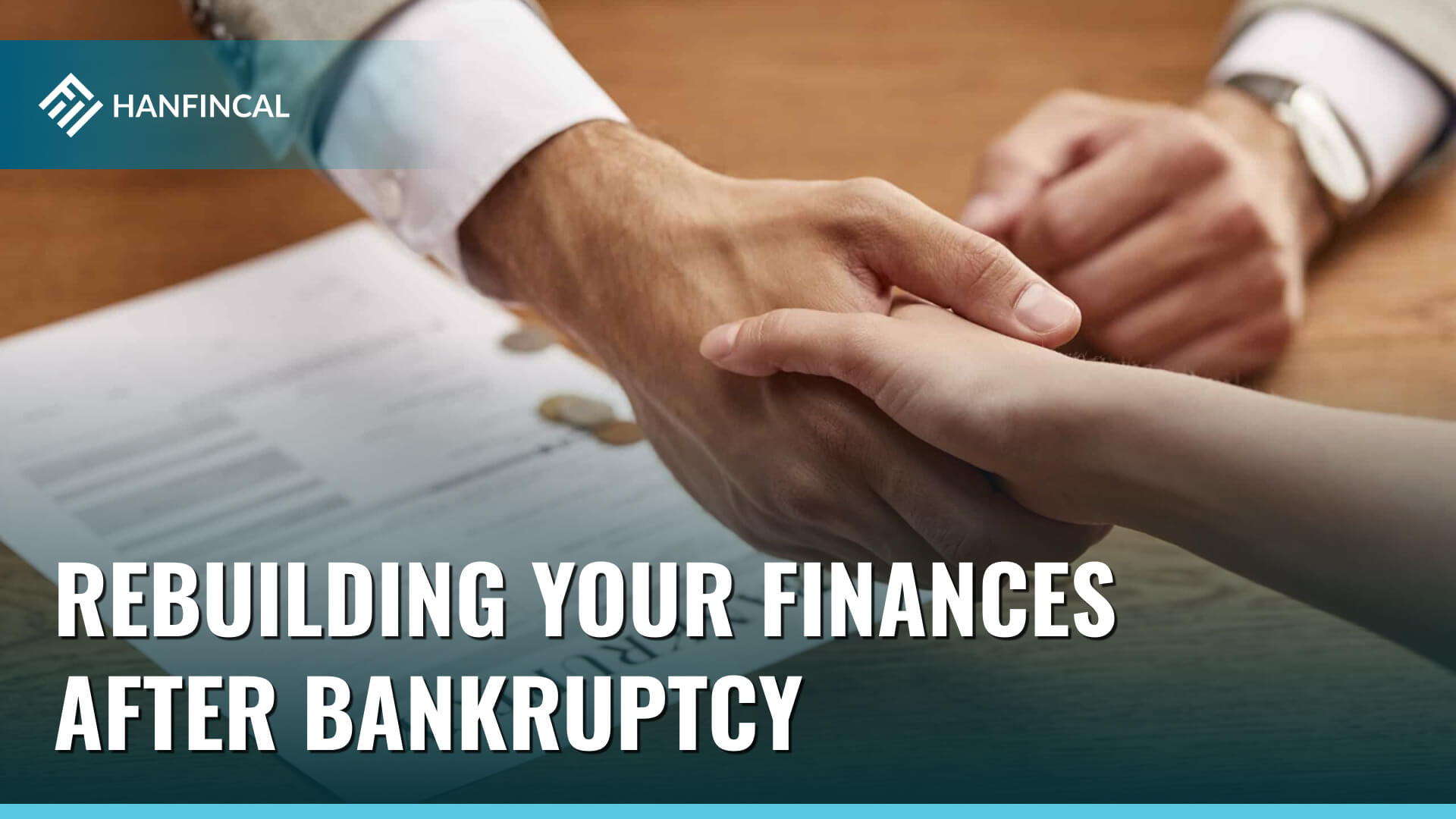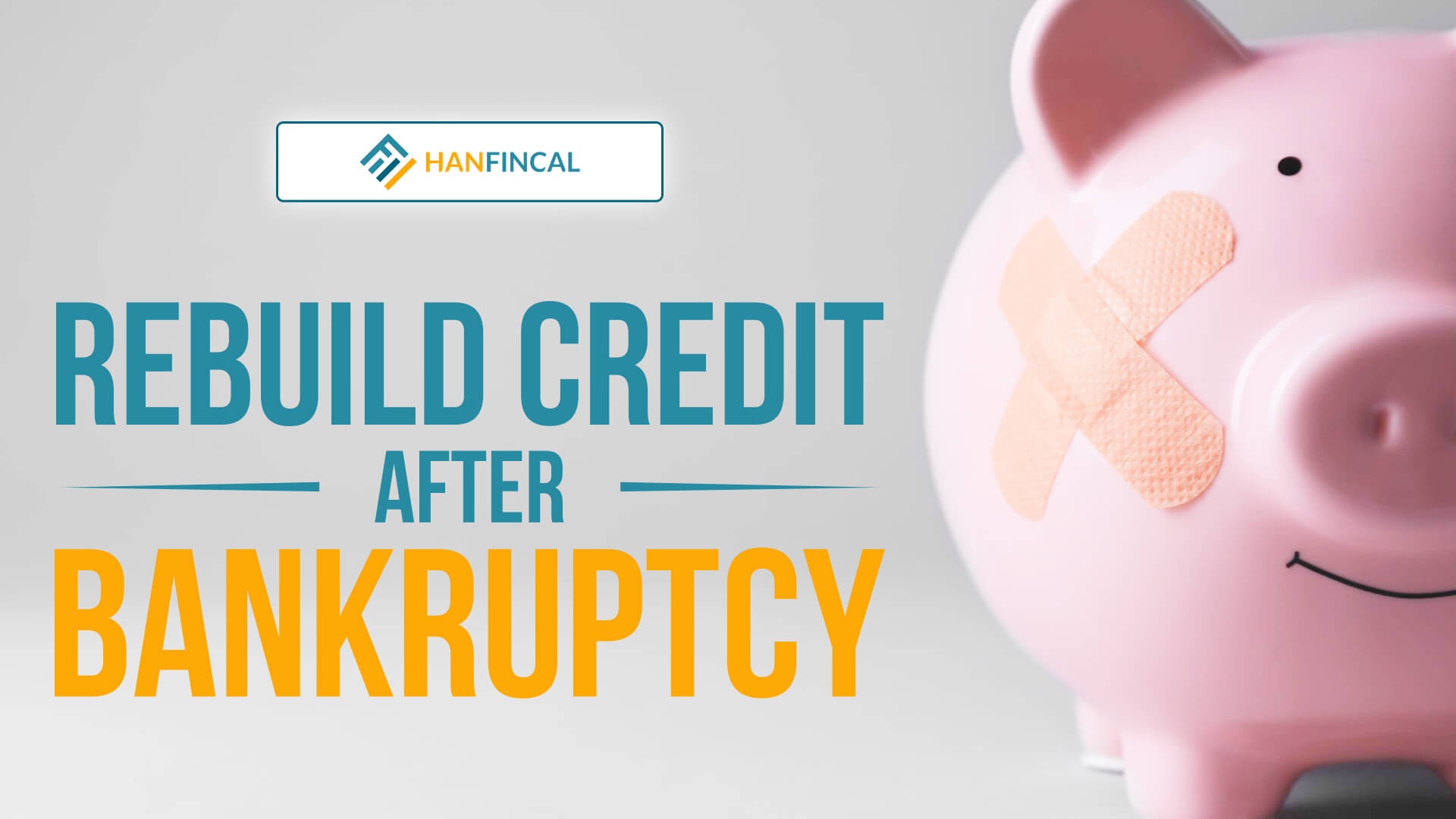No one wants them to fall into bankruptcy. It hurts and damages credit score and history. Notwithstanding unexpected problems, you have to recover your credit from the rubble. So, how to rebuild credit after bankruptcy can be your first interest this time being. Let’s come with Hanfincal to explore seven effective ways to help you deal with and overcome this crisis.
1. How long does it take to rebuild your credit after bankruptcy?
1.1. How long does it take to rebuild your credit after Chapter 7 bankruptcy?
It takes about two years to see a little improvement on your credit after ten years of Chapter 7 bankruptcy stays on your credit report. After those ten years, all bankruptcy records must be removed from your credit report.
We can see a gradual decrease in the impact of bankruptcy on your credit score over ten years. This may be due to the immediate decrease in the consumer’s debt-to-income (DTI) ratio, which is the amount owed concerning the amount of available credit.
1.2. How long does it take to rebuild your credit after Chapter 13 bankruptcy?
It takes about 12 to 18 months to start improving your credit score after only seven years of Chapter 13 bankruptcy stays on your credit report. Many borrowers can refinance their restructured debt after 18 months.
2. How to rebuild credit after bankruptcy with 7 effective ways?

How to rebuild credit after bankruptcy with 7 effective ways?
2.1.Check your credit report regularly
Bankruptcy can destroy, severely damage, or even wipe out your credit which you make every effort to build. However, you should still check your credit report at least once a year because there may be errors that make it appear worse than it is. After filing for bankruptcy, review your free credit reports. If you find any error, you should dispute it as soon as possible.
2.2. Keep an eye on your credit score
Checking your credit score monthly is an important step toward improving your score after bankruptcy. Why? This is because you should keep an eye on your credit score for any red flags that could indicate identity theft or other problems. Check your score after your accounts are discharged during the bankruptcy process also to ensure that these changes were accurately reported.
Create an online account with a free service to check your credit score; several credit card companies also provide customers with free score updates. While credit score increases may be gradual, checking your credit score frequently is an effective way to stay motivated as you work to improve your credit habits.
2.3. Have stable jobs
Although your job has no direct impact on your credit score, it does indicate that you have a steady source of income that can help lenders assess your creditworthiness. They want to know you have a steady income and can repay the loan.
Income source and job history in the previous 24 months are important requirements that lenders take into account when reviewing your application for new credit or a loan. Remaining your job unchanged works in your favor because it increases the lender’s confidence in your ability to repay your loan even if you file for bankruptcy.
2.4. Apply for a new secured credit card
A secured credit card is the best way to help you rebuild your credit from the ground up. Because your credit history is destroyed after bankruptcy, your current credit is classified as a fair or poor one.
While these cards typically have high-interest rates, every action on these cards is still reported to all three credit bureaus. This can lead to a chance to build your creditworthiness through responsible credit behavior.
Some secured cards even allow you to “upgrade” to an unsecured card after making on-time payments for a certain period of time. This is advantageous because you will not have to apply for a new, unsecured card as your credit improves.
Please note that you may be denied a secured card. Read the requirements carefully; you’ll want to be almost certain you’ll be approved before applying because each credit inquiry can result in a small, temporary drop in your credit score. This decrease will be more than offset if you obtain a credit card, use it sparingly, and pay off the debt on time.
2.5. Prepare a smart credit card strategy
Even though it is beneficial to credit builders, you should plan an intelligent strategy for applying for a new credit card. A hard inquiry is made on your credit report for each new credit application. Too many hard inquiries in a short time can damage your credit score because lenders consider it risky behavior.
Keep an eye on your credit and be aware of the issuer’s underwriting standards so you can apply for credit more wisely.
Consider a secured credit card or first becoming an authorized user to make a firm foundation for your credit. Better credit history will increase your chances of being approved for credit cards with stricter requirements.
2.6. Continually make payments with new credit cards
Payment history is the most important factor, accounting for 35% of your credit score. After a bankruptcy, your credit is highly vulnerable, and you must pay close attention to your monthly payments. Once you have new credit, making timely payments will demonstrate your commitment to your credit rebuilding journey.
Here are some options that can help you protect your payment history:
- Paying off your credit card multiple times per month.
- Enabling autopay.
- Organize your personal finances to pay off the entire balance each month.
- Setting up payment reminders.
2.7. Check your payments to ensure it is reported to the credit bureaus
All of your efforts to rebuild your credit will be futile if your payments are not reported to the credit bureaus. Check your payments frequently to ensure that any lender or creditor you use after bankruptcy reports to all three so that your positive activity is recorded and raises your credit score.
Aside from credit-related payments, non-credit-related payments (such as utilities, rent, and cell phone) can also be reported to the bureaus. Not all credit scoring models consider these payments when calculating your score, but having these positive payments as part of your credit history won’t hurt.
3. 3 Ways to rebuild your finances after bankruptcy

3 Ways to rebuild your finances after bankruptcy
3.1. Create and stick to a new budget
Creating and sticking to a new budget is the first step you can take to improve your financial situation. Every purchase, income source, and transaction requires management to ensure a smooth cash flow. You can stay within your means and avoid overspending by keeping a close eye on your spending habits. Sticking to a budget and tracking where your money goes versus how much comes in can help you stay on track. As a result, you can avoid accumulating too much debt.
Make it a habit to check your bank balance daily and your budget at least once a month. You can make necessary changes during your monthly budget check-ins.
3.3. Build an emergency fund
Building an emergency fund is a firefighting strategy for times when you need money quickly. It is easy to fall back into the same debt traps that led to bankruptcy without this reserve.
You can avoid having to apply for loans and pile debt by putting a part of your income into your savings account or cutting back on non-essential subscription services or memberships.
3.3. Pay attention to your credit habits
To truly rebuild your credit after bankruptcy, you must develop sound financial habits. They do not, however, occur overnight. To build them, you must practice daily, little by little. Here are four key points to put into practice for good financial health.
- Reduce your credit card use: Reducing or eliminating your credit card use can temper the temptation to overspend and reduce the likelihood of this.
- Make timely payments: Payment history accounts for 35% of your FICO Score calculation, so making on-time payments is critical when rebuilding credit after bankruptcy.
- Maintain low credit balances: Because the balance you owe accounts for 30% of your FICO Score calculation, maintaining low credit balances is critical to rebuilding credit after bankruptcy.
- Be patient: improving your score can take two months to two years.
4. How much will credit score increase when bankruptcy falls off?
You can increase 50-150 points of your credit score when a bankruptcy falls off your report. Someone may find it difficult to wait 7-10 years. As a result, in addition to gradually rebuilding your credit after bankruptcy, you should collaborate with a financial expert to help you dispute any inaccurate items on your report and have a good strategy for recovering your history.
Furthermore, you can obtain free scores online to help you improve and raise your current one to the next level. If you can get it, this is a good place to stay.
How to rebuild credit after bankruptcy? Hanfincal has seven effective ways to assist you in the beginning and draw an overall picture for your general financial health in the future. Don’t be concerned about bankruptcy; no one wants it to happen. Bear in mind that everything has a solution. Be patient and continue to recover your credit; you will be rewarded handsomely.
==> Read More:




